Let's start in the idle and in the low-load range. The almost 9 watts are perfectly fine here. As soon as the load is right, it will be almost 70 watts in the stress test and almost 71 watts in gaming. I measured this value in both Witcher 32 and Metro Exodus. Easier exercises, such as WoT or CAD applications with 3D preview, still work with more moderate 50 to 53 watts. By the way, the 70 watts account for around 4 watts of the 3.3 volt rail, so that the magic number of 66 watts on the 12-volt rail stands like one. Why this is so important, I'll tell you right away.
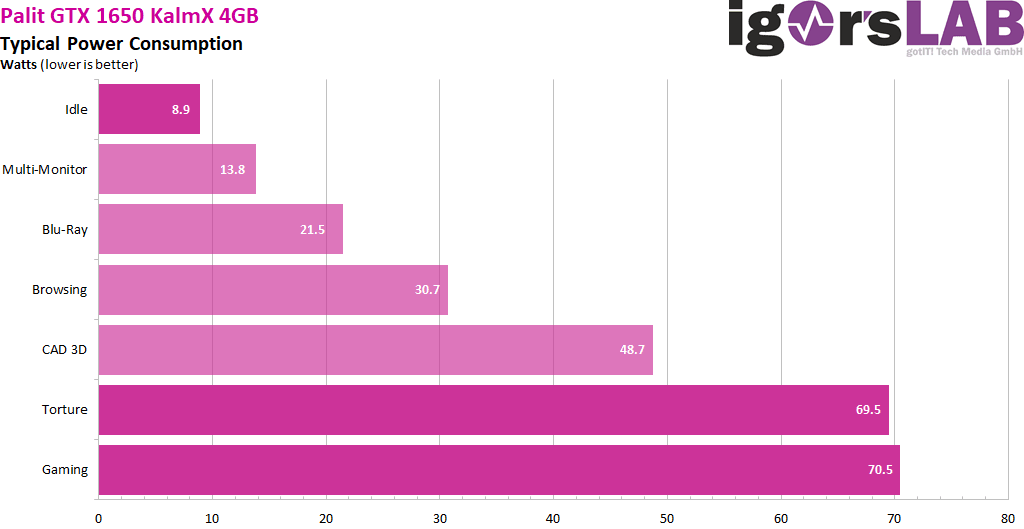
By the way, the specifications for the power limits can be read out nicely and coincide with the measurements perfectly, respectively. even 5 watts higher.
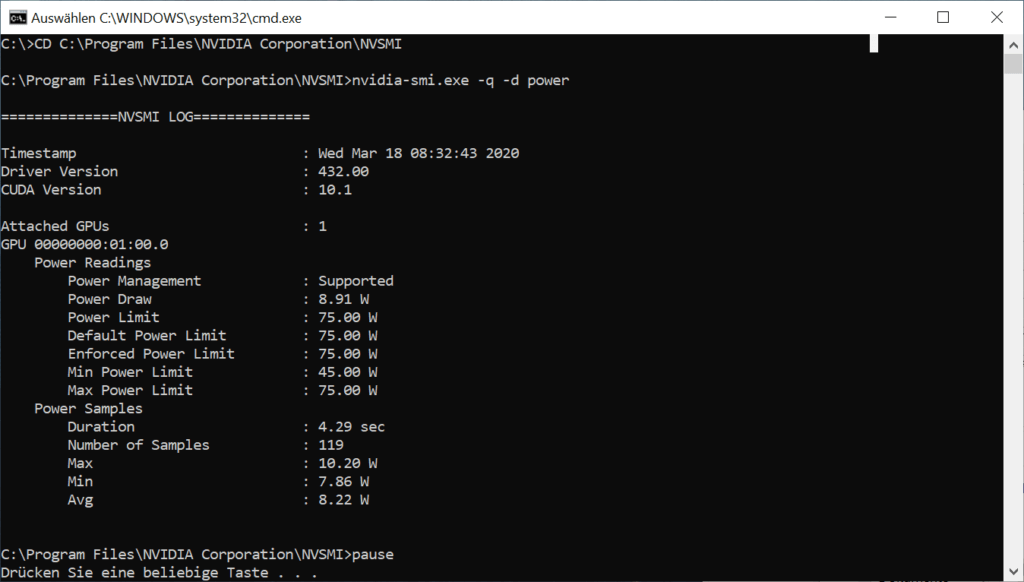
GPU Voltage Gradients (VDDC)
If we now compare the voltages, then one can see very nicely how the voltage breaks down with rising temperature, especially when operating without any fan (and of course also pulls the clock down with a good amount), which affects the maximum achieved boost step. But even more in detail, because now it's all about the power consumption.
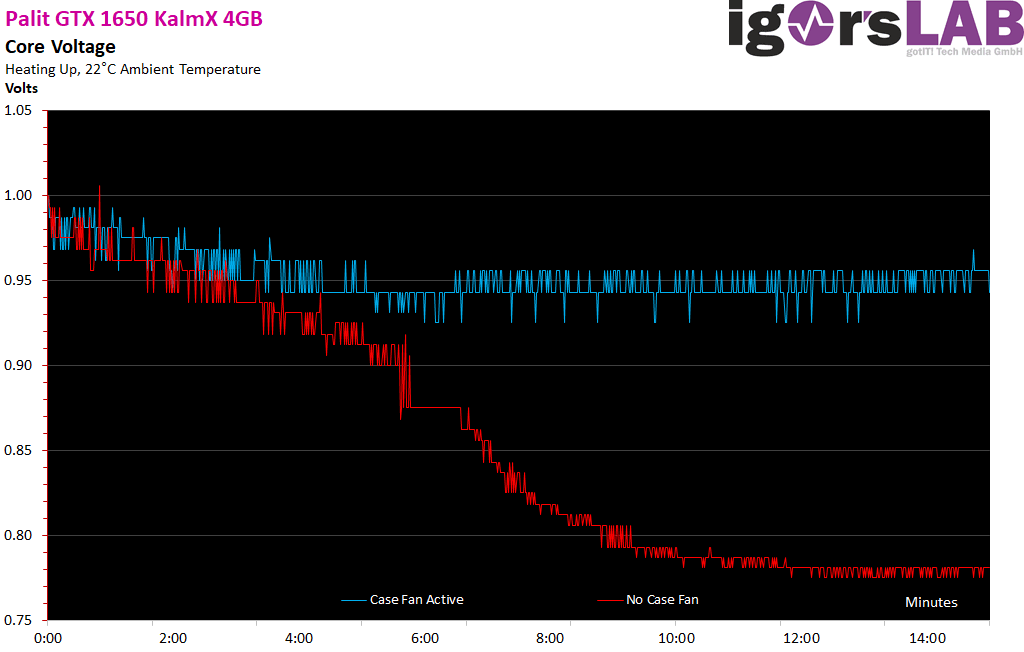
Let's look at the high-resolution measurements of power consumption and current/voltage. One already recognizes here the way in which Nvidias Boost is regulated and the proportions of the rails in question. For the sake of simplicity, I only picked out the charts with the power recording, because I'll get to the currents right away:
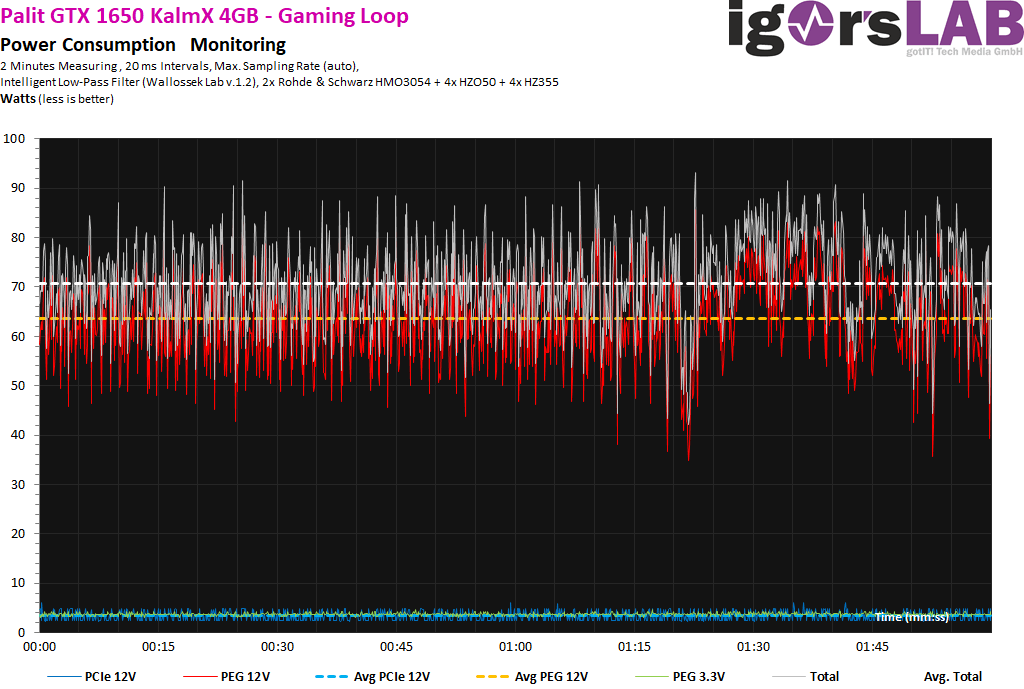
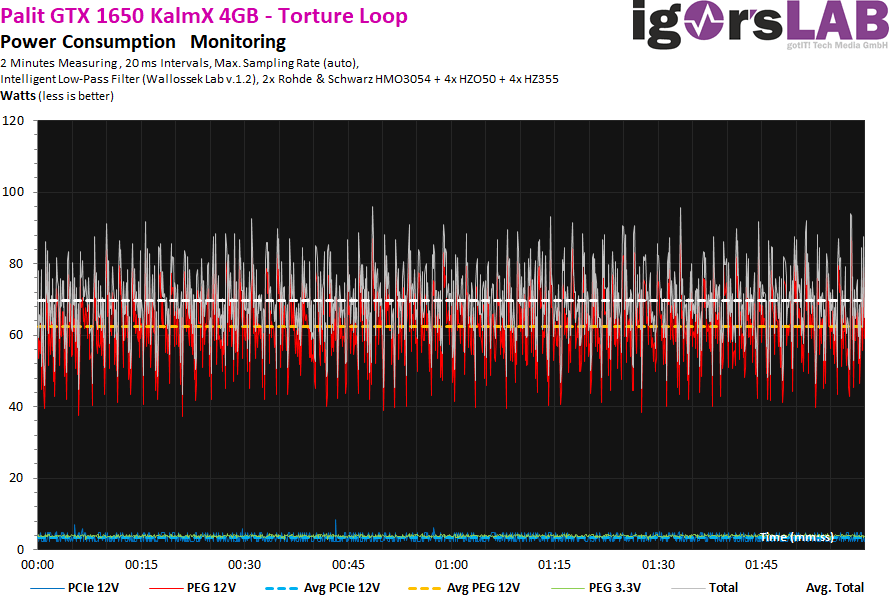
Standard compliance on the motherboard slot
Now it gets interesting and I like to take up the topic again with the currents. Standards are there to comply with them or even to undercut the ceilings. For the 12 V rail of the motherboard, the PCI SIG stipulates that the average value must never flow more than 5.5 amperes and that the voltage must be based on the ATX specifications. So if you want to meet the standard at exactly 12 volts on average, then it can only be 66 watts that this rail really delivers to the graphics card. And that's where the Palit card makes a great point landing! Of course, this is an average, which of course fluctuates depending on the load:
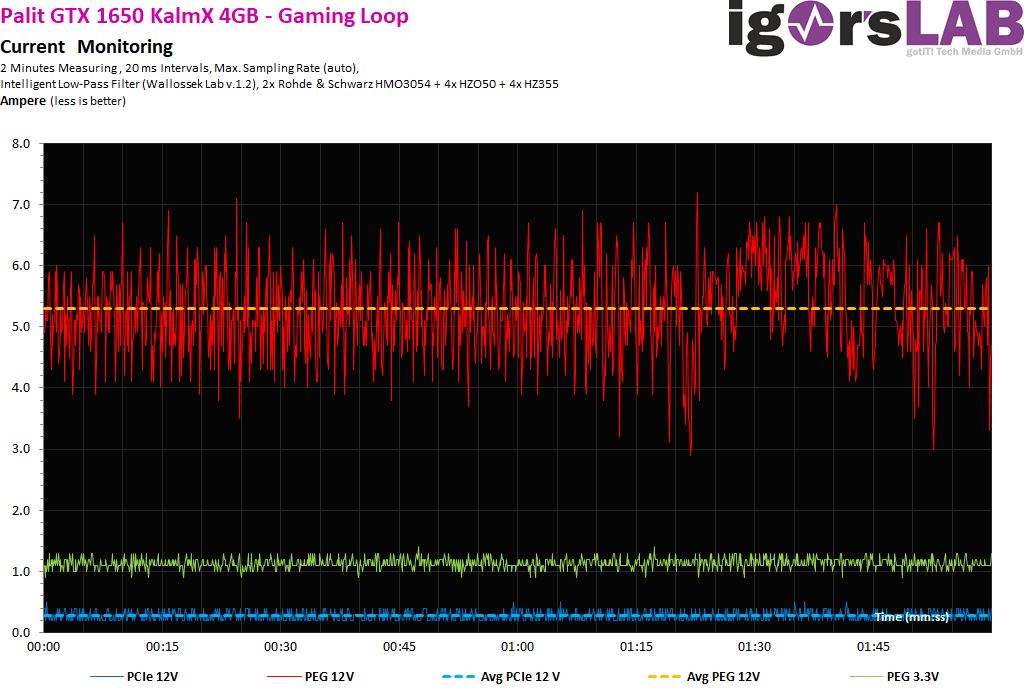
By the way, the 75 watts that are often used in many forums are an urban legend and the whole thing only works if the power supply makes full use of the ATX limits, i.e. properly overvoltages. But that is not the case here. However, around 4 watts of the 3.3 volt rail are still being added, which no longer plays any role on many larger cards. At Palit, however, one has made a virtue out of necessity, especially since one can generate smaller partial voltages than 3.3 volts even with less losses and effort, as if one were doing it completely over 12 volts.
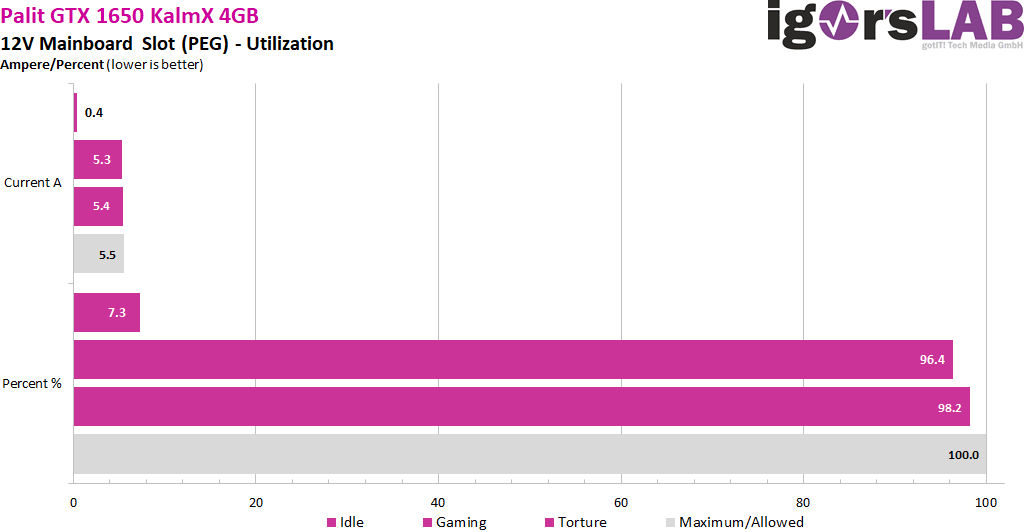
Power supply measurement and dangerous load peaks
As I have already demonstrated in detail in my basic article "The fight of graphics card against power supply – power consumption and load peaks demystified", there are also temporarily higher loads in the millisecond range, which are unfavorable in case of unfavorable designed or improperly equipped power supplies can already lead to unexplained shutdowns. The TBP (Typical Board Power) measured by the graphics card manufacturer or the reviewers does not really help for a stable design of the system.
Peaks with intervals between 1 and 10 ms can lead to shutdowns with very fast-reacting protective circuits (OPP, OCP), especially for multi-rail power supplies, although the average power consumption is still in the norm. For this card, I would therefore calculate the normal OC with up to 300 watts as a graphics card load proportionally to the secondary-sided total power consumption of the system, in order to have enough reserves in case of a case. A short excerpt with high resolution now shows us the 20 ms measurements (10 S intervals), how I run them automatically for valuation:
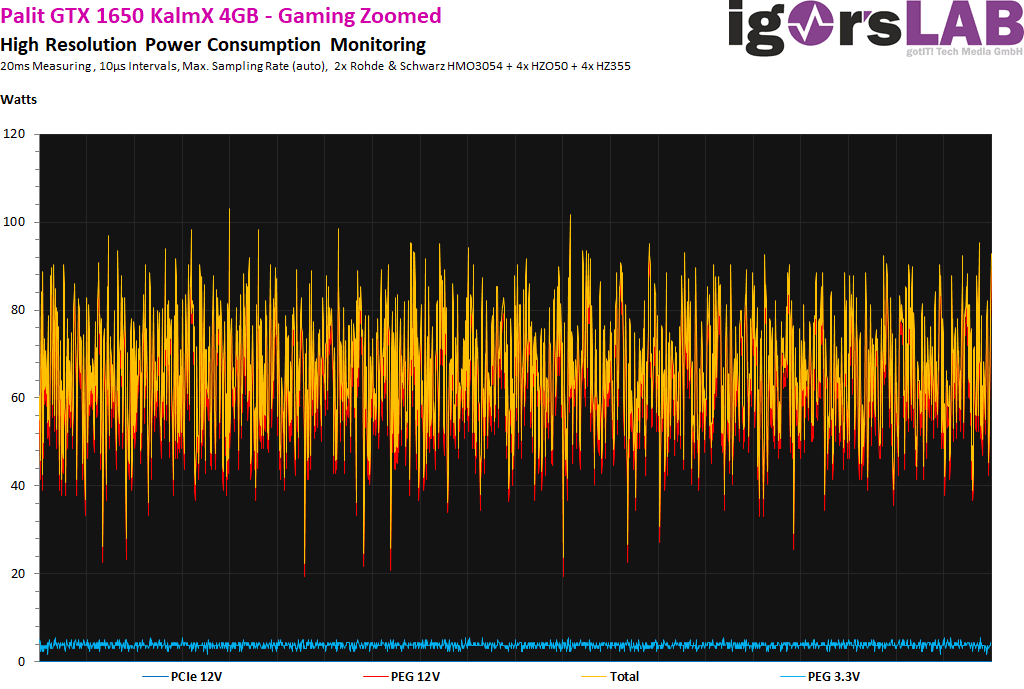
On the next diagram I recorded not only the currents but also the voltage and you can see very nicely the fluctuations that cannot be completely buffered away at the secondary side of the power supply.
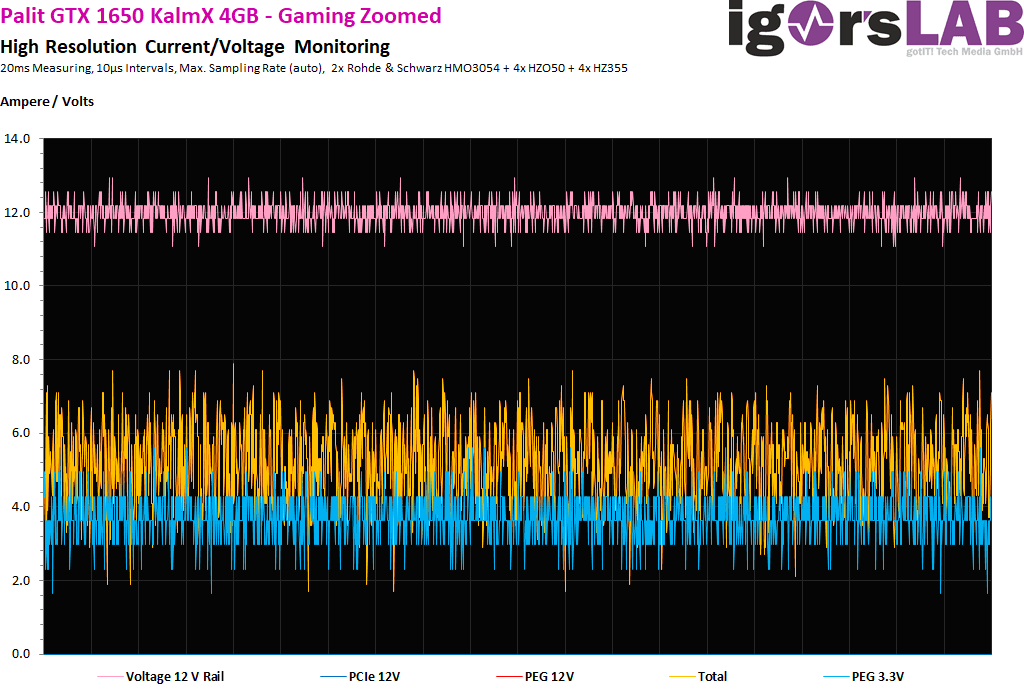
The switching intervals are significantly larger during the stress test:
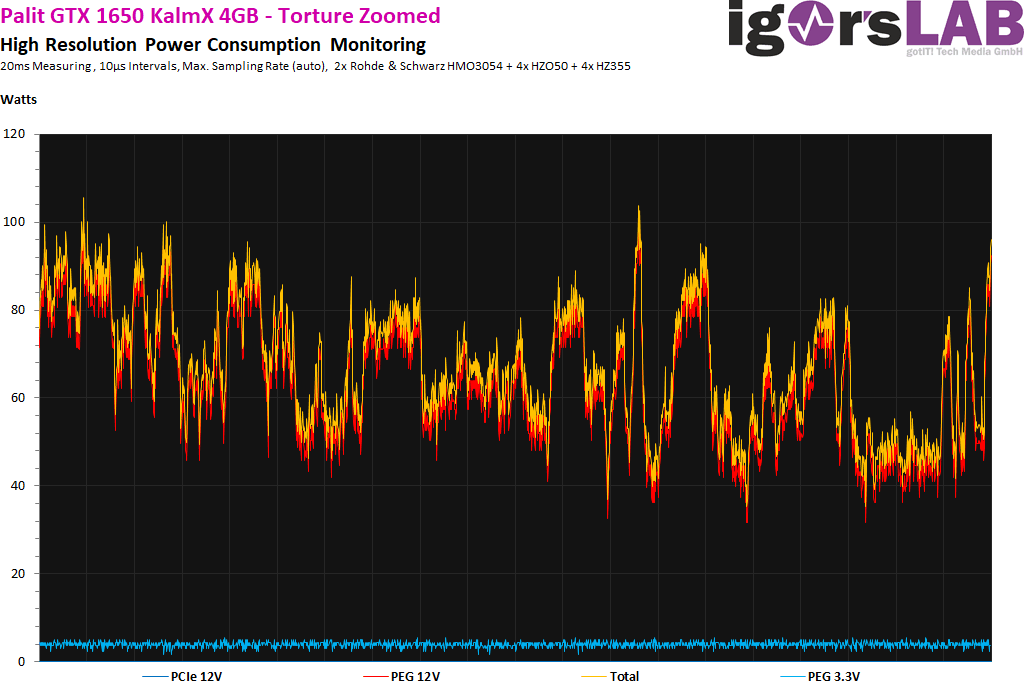
And here, too, the tension fluctuates like a giant poplar in the wind:
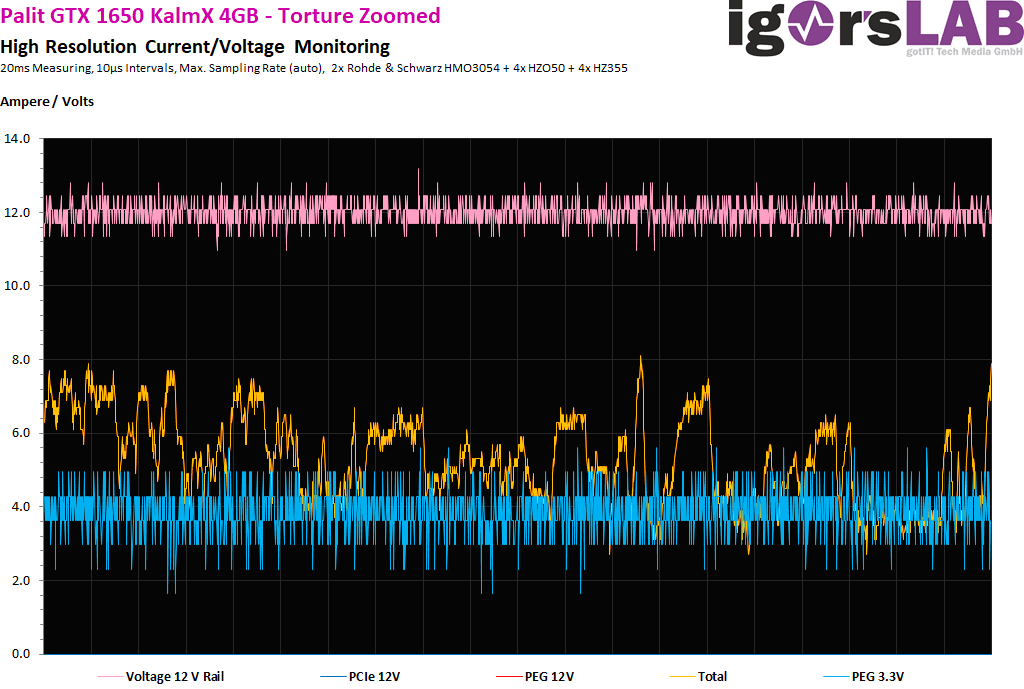
Palit GeForce GTX 1650 KalmX, 4GB GDDR5, HDMI, 2x DP (NE5165001BG1-1170H)















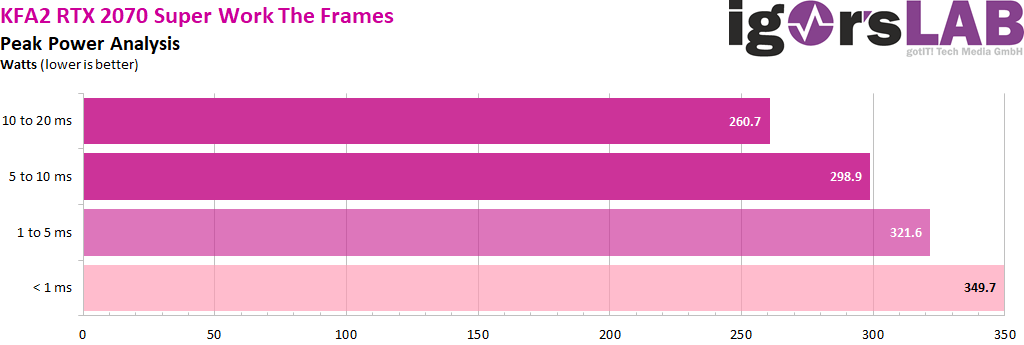


















Kommentieren